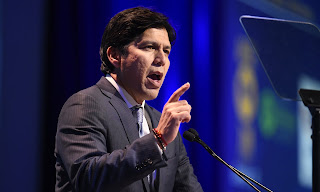California’s Democratic leaders are determined to fight the climate change that’s ravaging their state.
In America today, it’s rare to see political leaders respond to a threat with an appropriate evidence-based policy solution. At the national level, more often we see actions that aggravate existing problems or create new ones. California – the country’s most populous and economically powerful state – has been a welcome exception.
California has been battered by extreme weather intensified by climate change. From 2012 to 2016 the state was scorched by its worst drought in over a millennium. Weather whiplash struck in 2017, when much of the state broke precipitation records. This combination led to devastating mudslides and created the conditions for the most destructive and costly wildfire season on record in 2017, followed by the state’s largest-ever wildfire in 2018, which broke the previous record (set in 2017) by more than 60%.
All of these impacts have been exacerbated by global warming. The past five years have been California’s five hottest on record. And so, the state’s leaders decided to do something about it. California had already set a renewable portfolio standard in 2002, strengthened by Governor Arnold Schwarzenegger’s 2008 executive order requiring that 33% of electricity be generated by renewable sources by 2020. Governor Jerry Brown signed Senate Bill (SB) 350 in 2015, expanding the requirement to 50% renewables by 2030.
Last week, California state lawmakers passed State Senator (and candidate for US Senate) Kevin de León’s SB 100, which amps up the target to 50% renewables by 2026, 60% by 2030, and 100% from “renewable energy resources and zero-carbon resources” by 2045.
Read more at California's Response to Record Wildfires: Shift to 100% Clean Energy

No comments:
Post a Comment